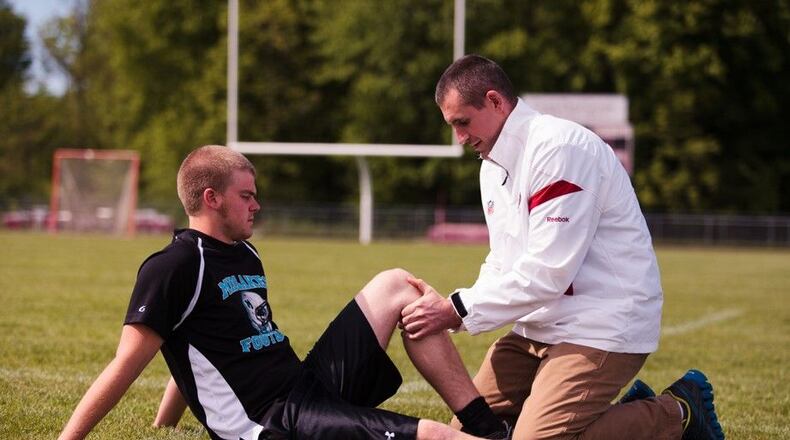An injury robs you of time, medical costs and the good old joy of life. And while accidents happen, certain very common injuries are easily avoided.
When you know you know which injuries are most common, you are more likely to be able to dodge them.
These are the three most common injuries in the U.S., one from each of the most important areas of your life: home, work and sports.
Credit: Lannis Waters
Credit: Lannis Waters
At work: Overexertion causes lost-time injuries
According to the Arbill Safety blog written by CEO Julie Copeland, 4,405 workers were killed on the job in 2013 while millions more suffered serious non-fatal injuries. What was the No. 1 workplace injury? Overexertion injuries, including injuries related to pulling, lifting, pushing, holding, carrying and throwing.
"Overexertion has not only consistently been the number one workplace injury, but is also the most expensive," noted Copeland.
The Top 5 most common workplace injury list is rounded out by:
2. Slipping/tripping
3. Falling from heights
4. Reaction injuries
5. Falling object injuries
Copeland has lots of recommendations for avoiding workplace injury, including using proper personal protection gear, like a hard hat, and an employer focus on keeping the work environment free from hazards.
In sports: Knees are hit with the most injuries
There's an inherent risk of injury when you play sports, both from harm inflicted by opponents (intentionally or not) as well as from overexertion. The most frequent target? Knees, according to UnityPoint.org's LiveWell blog, which examined the most common sports injuries incurred playing common sports like football and basketball.
The specific knee injury is patellofemoral syndrome, caused by the knee cap repeatedly moving against the leg bone, a movement that damages tissue. It accounts for around 55 percent of all sports injuries. Knee injuries make up 25 percent of problems treated with orthopedic surgeries.
If you want to reduce your risk of knee injuries, wearing the right shoes can help. Other tips: run on softer surfaces, like indoor tracks, since they're easier on knees than concrete. If you injure your knee, rest your knee for two days with ice and anti-inflammatory meds to speed healing.
Filling out LiveWell's Top 5 most common sports injuries:
2. Shoulder injury
3. Tennis or golf elbow
4. Hamstring strain
5. Sciatica
At home: Falls are the most common injury
Falls are not only the No. 1 cause of home injuries, they are the top cause of home deaths in the U.S., according to the Home Safety Council as reported by WebMD. The two groups who fall most are children under age 5 and adults over age 70.
To avoid this glaring risk on the homefront, WebMD recommends taking these steps:
- In the bathroom: Install grab bars and non-slip mats or appliques in the tub or shower. Also invest in a bathmat with a nonskid bottom. And if water does splash the floors, sop it up right away.
- On the stairs: Remove clutter from stairs and walkways. Install handrails on all the stairs inside and outside your home and make sure they're well lit.
- For babies and toddlers: Install hardware-mounted safety gates (never accordion-style) at the top and bottom of stairs. These gates should have the JPMA (Juvenile Products Manufacturers Association) Certification Seal. Also place a guard, ideally Plexiglass, on indoor lofts, landings, balconies and stair banisters if your child is able to slip between the posts.
- Eliminate throw rugs: They're a big tripping hazard, especially for the very young or old. If you can't do without throw rugs, tape or tack them to the floor so they won't slide.
- Leave a light on at night: Night-lights in bedrooms, bathrooms and halls are ideal.
- Take safety measures with windows: Install window guards with a quick-release mechanism in case of fire. Don't rely on screens to prevent falls; they aren't strong enough. Keep furniture away from windows (children could climb up on it and fall out) and always watch children when they're near windows.
About the Author
Keep Reading
The Latest
Featured



